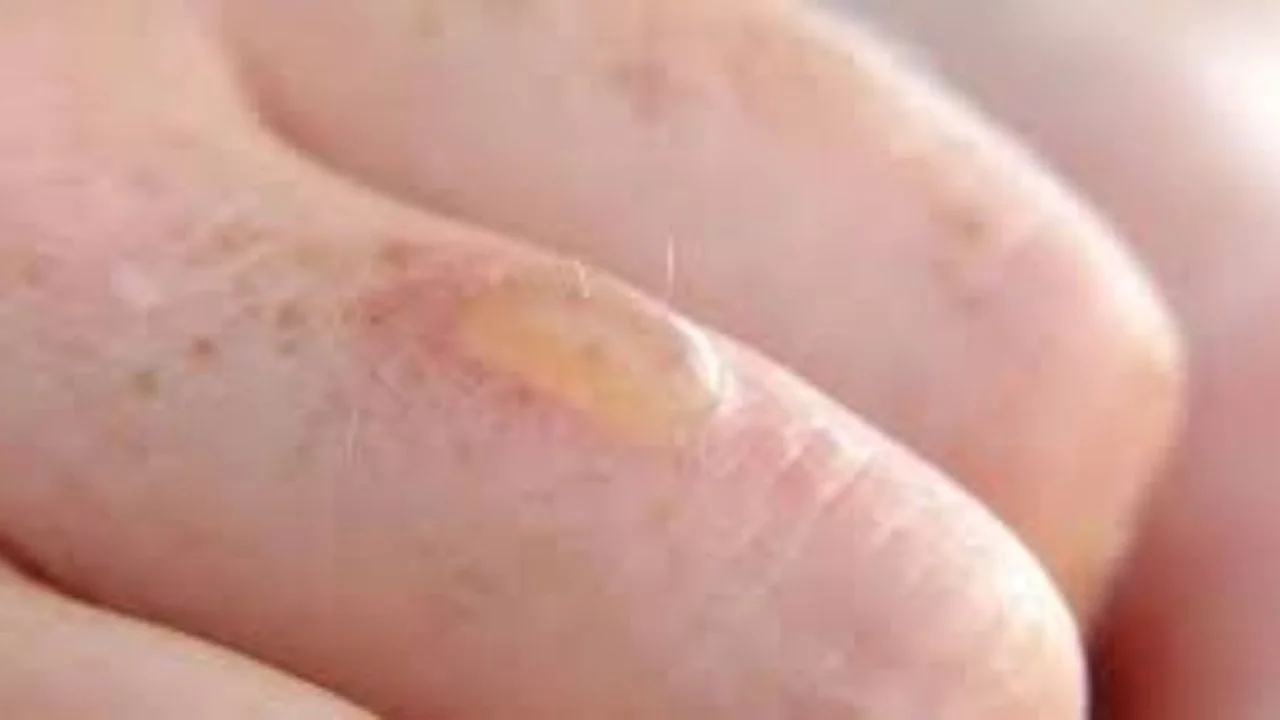Blisterata may sound like a term straight out of a fantasy novel, but it is a fascinating natural phenomenon with real-world significance. Have you ever wondered what Blisterata is and why it’s gaining attention across various fields? Let’s dive into the captivating world of Blisterata and uncover its secrets.
The Origins of Blisterata: Historical Background
The origins of Blisterata can be traced back to ancient civilizations, where the interplay between natural resources and cultural practices shaped its development. This phenomenon is believed to have first emerged in regions rich in specific minerals, particularly in areas near hot springs or volcanic activity, where blistering effects on materials were observed.
Early Uses and Practices
The earliest records indicate that ancient cultures, such as the Egyptians and Mesopotamians, utilized naturally occurring blistering phenomena for various practical purposes. They recognized the effects of heat and mineral interactions on materials like clay and metals, leading to the creation of unique pottery and tools. The intentional manipulation of these processes laid the groundwork for the artistic and functional aspects of Blisterata.
Cultural Significance
As civilizations evolved, so did the significance of Blisterata. In many cultures, the unique textures and colors created by blistering processes became symbolic of beauty and craftsmanship. Artisans began to experiment with these techniques, developing their own styles and methods, which contributed to the cultural identity of their communities.
The Renaissance and Beyond
The Renaissance period marked a significant turning point in the history of Blisterata. Artists and craftsmen began to document their methods and share knowledge across regions, leading to a resurgence in the appreciation of blistering techniques. This era saw the emergence of intricate designs and innovations that expanded the boundaries of what could be achieved through Blisterata.
Modern Developments
In contemporary times, Blisterata has undergone a transformation, blending traditional methods with modern technology. The revival of interest in artisanal crafts has led to a renewed exploration of historical techniques, resulting in a vibrant community of artists dedicated to preserving and innovating within the Blisterata tradition.
Scientific Composition
Chemical Structure
Blisterata’s chemical composition is a marvel of nature. Comprising complex compounds, it boasts unique properties that set it apart from other natural substances. Scientists continue to study its molecular structure to understand its full potential.
Unique Properties
What makes Blisterata truly special are its distinctive properties. It exhibits remarkable resilience, adaptability, and a range of benefits that have intrigued researchers and enthusiasts alike.
Natural Occurrence
Formation Process
The formation of Blisterata is a complex and fascinating process. It requires specific environmental conditions, including temperature, humidity, and soil composition. Understanding this process helps us appreciate its rarity and value.
Environmental Conditions
Blisterata thrives in diverse environmental conditions, from tropical rainforests to arid deserts. Each environment influences its growth, appearance, and properties, making it a versatile natural wonder.
Cultural Significance
Blisterata in Ancient Cultures
Ancient cultures revered Blisterata for its mystical and healing properties. It played a significant role in traditional medicine, spiritual rituals, and daily life. Exploring its cultural significance provides insight into its enduring legacy.
Modern-Day Uses
In contemporary times, Blisterata has found applications in various industries, from healthcare to beauty. Its versatility and efficacy make it a valuable resource in today’s world.
Health Benefits
Medicinal Properties
Blisterata is renowned for its medicinal properties. It has been used to treat a range of ailments, from skin conditions to internal disorders.
Recent Research Findings
Recent studies have highlighted the therapeutic potential of Blisterata. These findings support traditional uses and open new avenues for its application in modern medicine.
Blisterata in Beauty and Skincare
Skincare Products
Blisterata has made its way into the beauty industry, particularly in skincare products. Its natural compounds are known to enhance skin health, offering solutions for various skin issues.
Benefits for Skin Health
From moisturizing to anti-aging effects, Blisterata provides numerous benefits for skin health. Its inclusion in skincare routines is a testament to its efficacy and growing popularity.
Economic Impact
Market Demand
The demand for Blisterata has surged in recent years, driven by its diverse applications. Its market value continues to rise, reflecting its importance in various industries.
Global Trade
Blisterata is a significant player in global trade. Countries that produce it benefit economically, while consumers worldwide gain access to its myriad benefits.
Environmental Impact
Sustainable Harvesting
Sustainable harvesting practices are crucial to preserve Bliste rata for future generations. Efforts are being made to ensure that its collection does not harm the environment or deplete natural resources.
Conservation Efforts
Conservation efforts are underway to protect Blisterata and its natural habitats. These initiatives aim to balance human use with environmental preservation, ensuring a sustainable future for this natural wonder.
Common Misconceptions
Myths and Facts
Blisterata is surrounded by myths and misconceptions. Separating fact from fiction helps in understanding its true nature and benefits.
Debunking Common Myths
Debunking common myths about Blisterata is essential to appreciate its real value. Knowledge dispels misinformation and highlights its genuine benefits.
How to Identify Blisterata: Physical Characteristics
Identifying Blisterata requires careful observation of its distinct physical characteristics. These features often set it apart from other materials and phenomena. Here are some key attributes to look for:
1. Surface Texture
Blisterata is renowned for its unique, blistered surface. The texture can vary from smooth to rough, but the defining feature is the presence of raised, bubble-like formations. These blisters can be small or large, and their arrangement often appears random, contributing to an organic look.
2. Color Variation
The color of Blisterata can range widely, depending on the minerals and materials involved in its formation. Common hues include earthy tones, such as browns, reds, and yellows, as well as vibrant colors like blues and greens. The color may also exhibit gradients or mottling due to the irregular distribution of minerals.
3. Translucency and Transparency
In some cases, Blisterata may exhibit a level of translucency, allowing light to pass through the material. This quality can create an interesting visual effect, especially in thicker specimens where light interacts with the blisters, producing highlights and shadows.
4. Weight and Density
Blisterata often has a distinct weight and density that can help in identification. Depending on its composition, it may feel heavier or lighter than other similar materials. The density can also affect how it responds to heat or pressure, which is a useful consideration during identification.
5. Breakage Patterns
When examining Blisterata, pay attention to how it fractures. The breakage often follows the contours of the blisters, creating jagged edges. This characteristic can help differentiate it from other materials that may break more uniformly.
6. Location and Context
Understanding the context in which Blisterata is found can aid in identification. It is often located in specific geological settings, such as volcanic regions, hot springs, or areas with rich mineral deposits. Knowing the environment can provide clues to its authenticity.
Cultivation and Harvesting
Growing Conditions
Cultivating Bliste rata involves replicating its natural growing conditions. Understanding these requirements is crucial for successful cultivation and harvesting.
Ethical Harvesting Practices
Ethical harvesting practices ensure that Bliste rata is collected responsibly. These practices support sustainability and protect the environment.
Blisterata in Cuisine
Culinary Uses
Bliste rata has culinary applications that may surprise you. It adds unique flavors and textures to dishes, making it a sought-after ingredient in gourmet cuisine.
Popular Recipes
Exploring popular recipes featuring Blisterata opens up a world of culinary delights. From traditional dishes to modern innovations, it enhances the gastronomic experience.
Potential Risks and Precautions
Allergic Reactions
While Bliste rata offers numerous benefits, it may cause allergic reactions in some individuals. Being aware of potential risks and taking precautions ensures safe usage.
Safe Usage Guidelines
Following safe usage guidelines minimizes risks and maximizes benefits. Proper knowledge and caution are key to enjoying Bliste rata safely.
Conclusion
Blisterata is a natural wonder with a rich history, diverse applications, and promising future. Its unique properties and benefits make it a valuable resource across various fields. As research continues and sustainable practices are adopted, Blisterata’s potential will only grow, enriching our lives in countless ways.
Read more : Kingymab: The Mysteries and Marvels of a Hidden Gem



